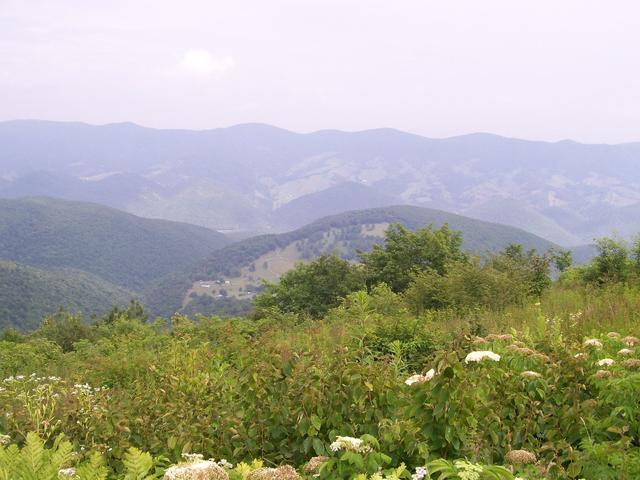Home » Regions » North America » Eastern Temperate Forests » Ozark, Oauchita-Appalachian Forests » Ridge and Valley » Northern Dissected Ridges and Knobs
Northern Dissected Ridges and Knobs
Last updated: August 10th, 2020
Page contents
↑About the Northern Dissected Ridges and Knobs
The Northern Dissected Ridges and Knobs form a region of the Ridge and Valley section of the Appalachians. This region is mostly located to the northwest of this region. It extends from central Pennsylvania through Maryland and into eastern West Virginia and western Virginia, and tends to be widest and cover a larger area towards the south, with only scattered, thin layers in the north.The topography consists of broken and dissected ridges. Elevations tend to be similar to than that of the Northern Sandstone Ridges, but the main distinction between these areas is the ridges here are more broken, and there are more isolated peaks. Although the elevations average lower than the sandstone ridges, the highest point in this region, Spruce Knob, reaches 4,863 ft (1,482 m.) The bedrock here consists of interbedded sedimentary rock, including siltstone. The stream drainage pattern is distinct from that of the the nearby Sandstone Ridges: whereas those ridges have a trellised pattern, here the pattern is more dendritic.
Original forest cover was probably mostly Appalachian oak forest in the north, dominated by northern red oak (Quercus rubra) and white oak (Quercus alba), with chestnut oak (Quercus montana) on drier ridges and peaks. The highest elevation summits featured red spruce (Picea rubens), although most of this region is not high enough to support conifer-dominated forests.
There are also some shale barrens in this region, where south- and west-facing slopes of exposed soil are steep enough to prevent soil accumulation. These unusual habitats are home to a large number of endemic species. Dominant species on these barrens include eastern redcedar (Juniperus virginiana), Virginia pine (Pinus virginiana), chestnut oak as stunted tree growth, along with shrub growth of hawthorn, Allegheny plum (Prunus alleghaniensis), and huckleberry, and herbaceous growth including mountain parsley and Kate's mountain clover (Trifolium virginicum).
This area is mostly forested, but there are a few pastures and the area is more developed and populated than the neighboring Northern Sandstone Ridges. As in much of the broader area, the proportion of red maple (Acer rubrum) here has increased as second-growth replaced the original forests.
This region is variably interspersed with the other components of the ridge and valley system, including the sandstone ridges that reach slightly higher elevations, and at lower elevations, the relatively infertile Northern Shale Valleys and the more fertile Northern Limestone/Dolomite Valleys. In the south, this region is replaced by the Southern Dissected Ridges and Knobs, identical in geologic origin but ecologically distinct due to the warmer climate. The cutoff between these two regions is somewhat arbitrary and probably represents a gradual transition rather than a clear boundary.
 This photo of the area around Spruce Knob, WV, shows the shape of this region, which is more dissected than the nearby sandstone ridges, and which has more isolated peaks. Photo © Ethan Gruber, CC BY-SA 2.0.
This photo of the area around Spruce Knob, WV, shows the shape of this region, which is more dissected than the nearby sandstone ridges, and which has more isolated peaks. Photo © Ethan Gruber, CC BY-SA 2.0.Plant Lists & In-Region Search
We do not yet have data to generate plant lists for a region as fine-tuned as this one. However you can move up to the broader Ridge and Valley and generate lists for that region: native plants or all plants. Or search that region's plants here:
↑References
1. Woods, A.J, Omernik, J.M., Brown, D.D. "Level III and IV Ecoregions of Delaware, Maryland, Pennsylvania, Virginia, and West Virginia", U.S. Environmental Protection Agency: National Health and Environmental Effects Research Laboratory, Corvallis, OR (1999) Web.


